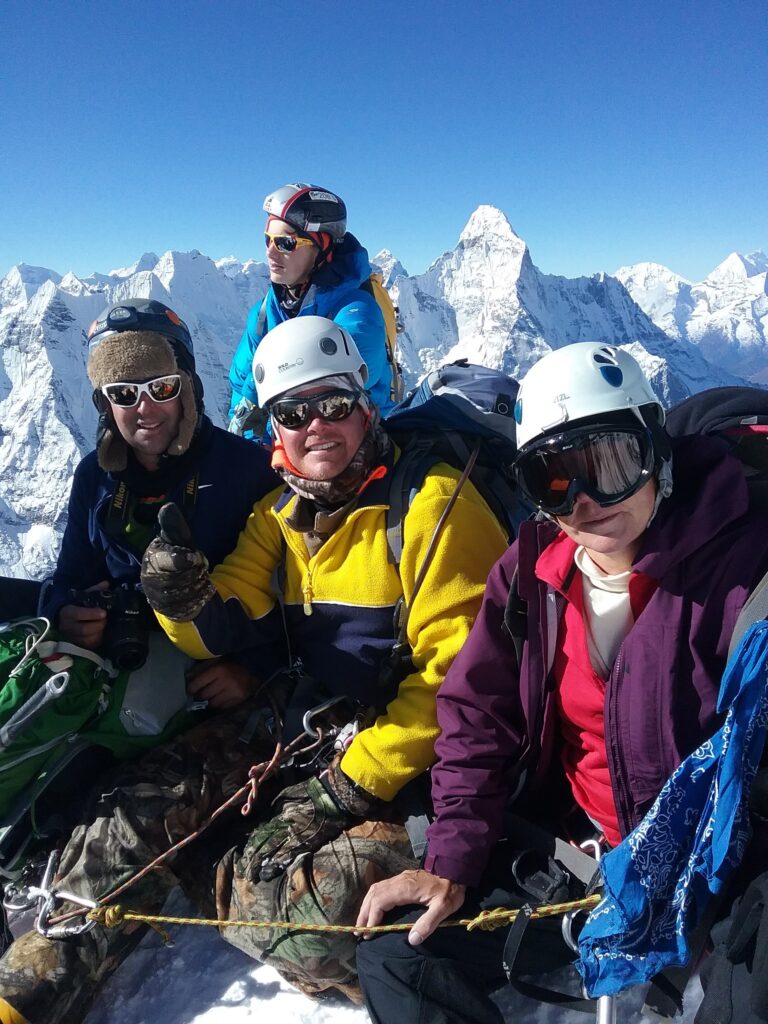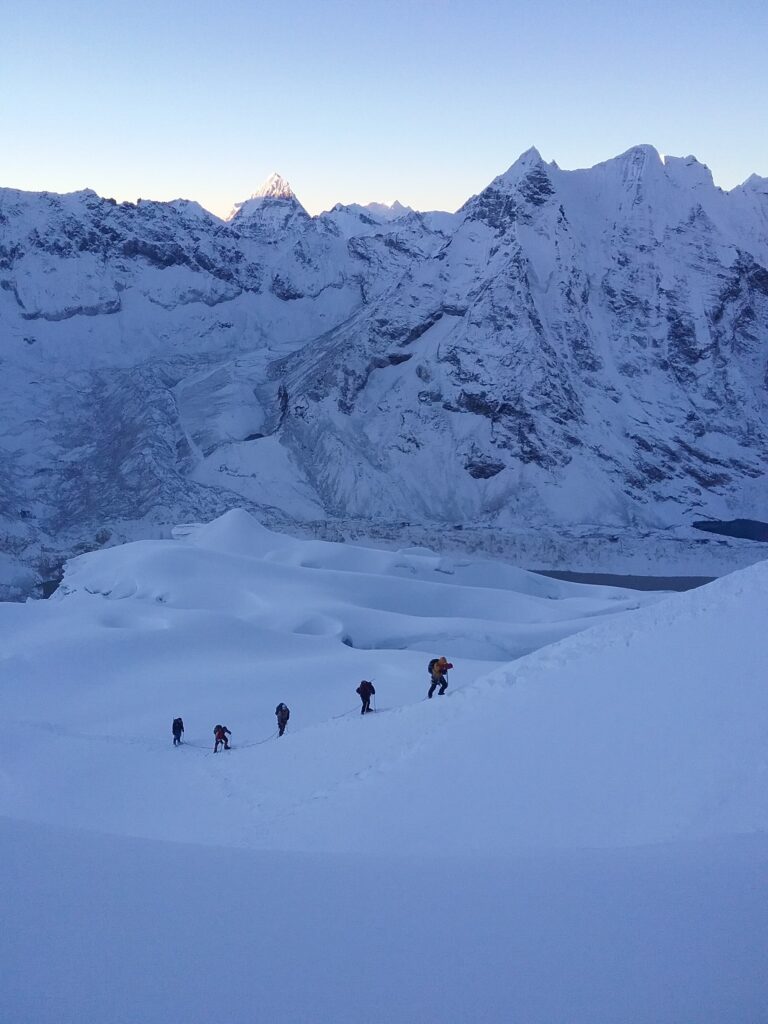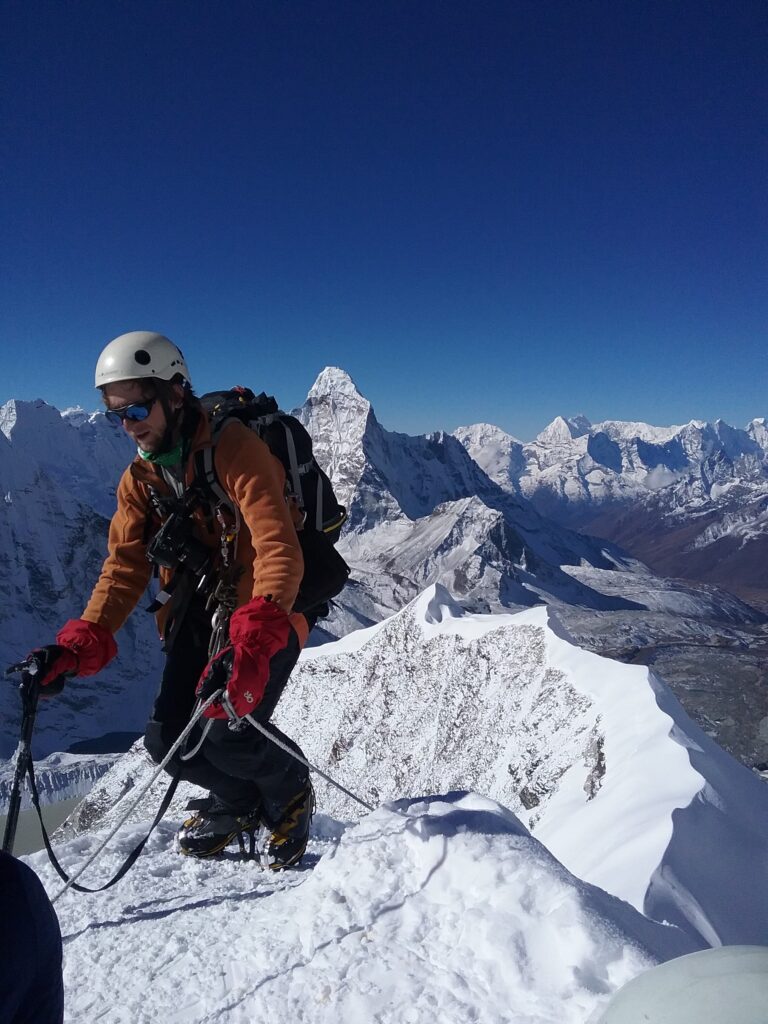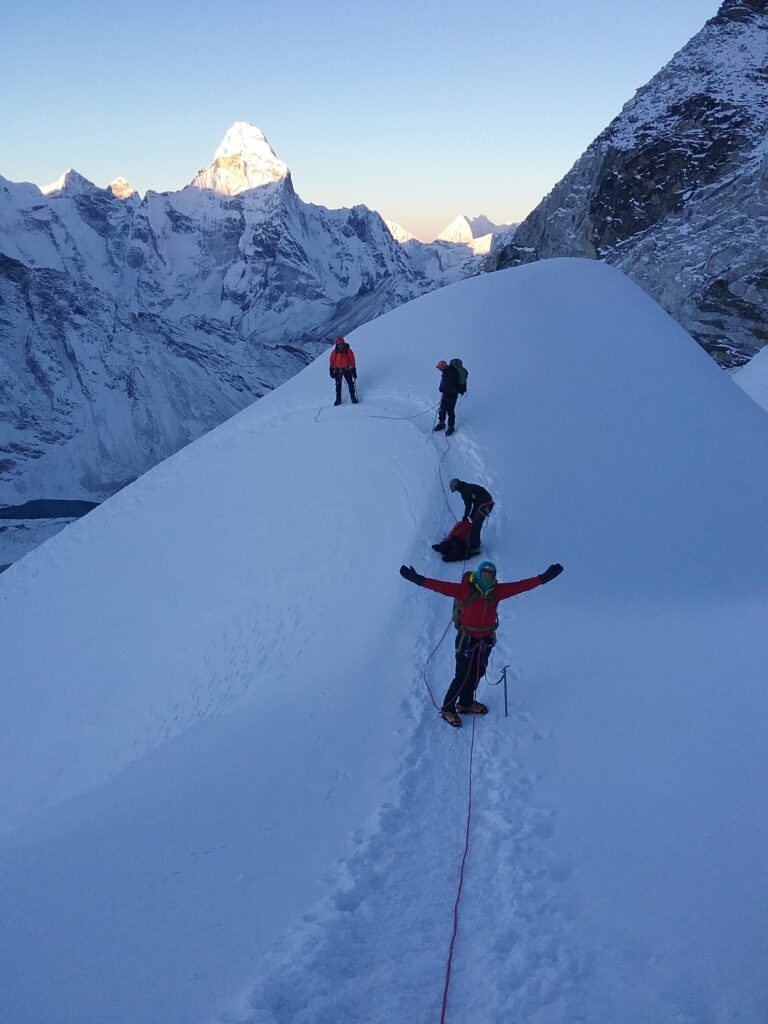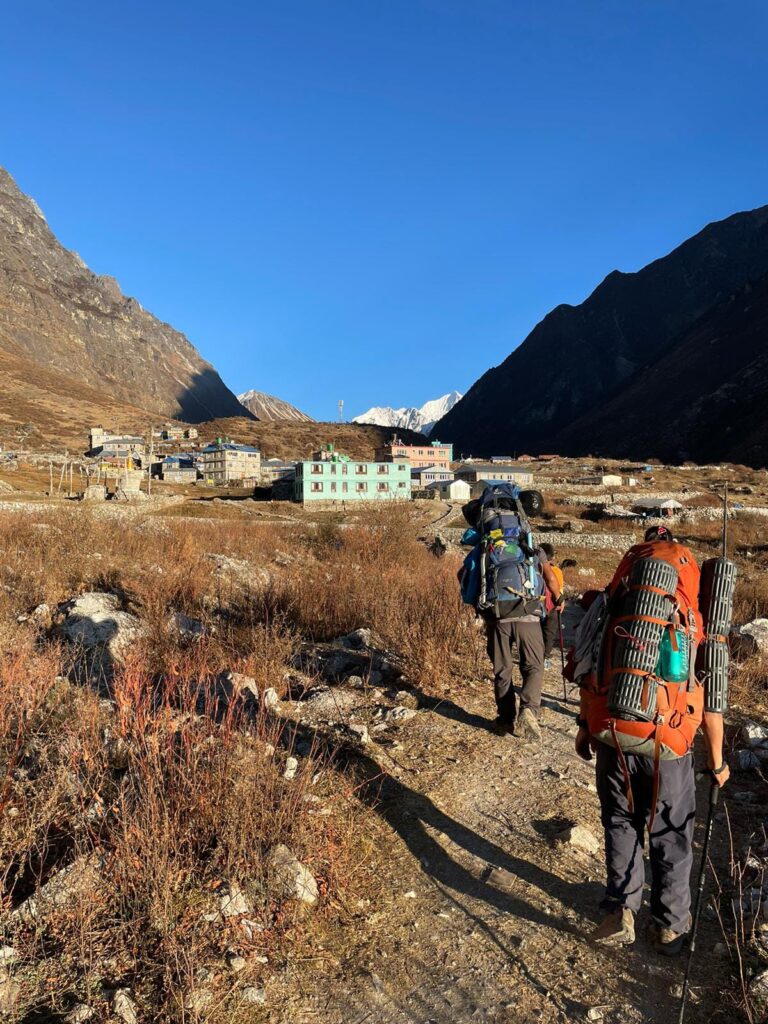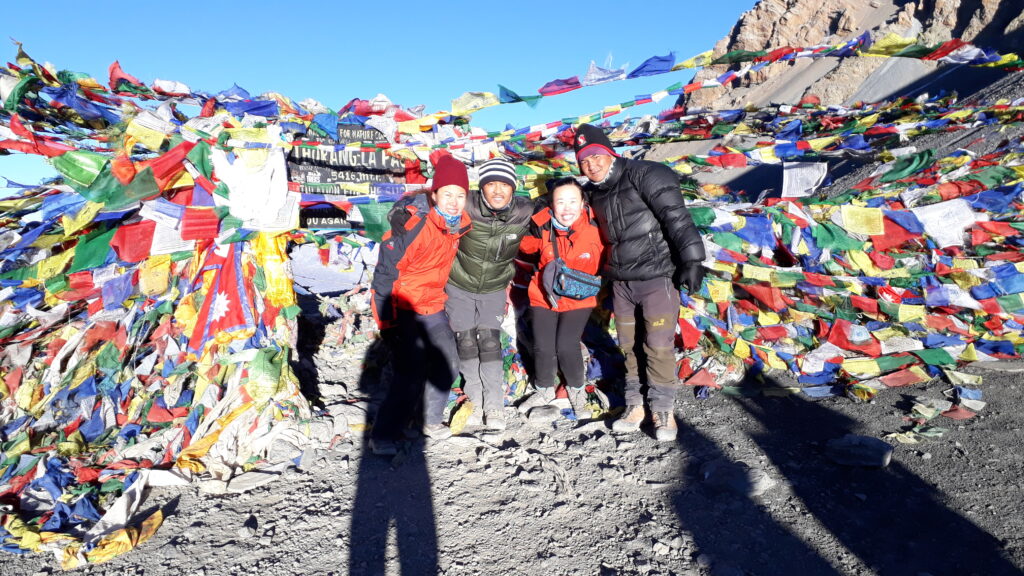Island Peak Climbing

Destination
Everest

Duration
22 Days

Grade
Popular Peak

Max Altitude
6,189 m

Group Size
2-12 Pax

Meal
All Inclusive

Activity
4-6 hrs

Accommodation
Hotel/Teahouse

Season
Autumn/spring
Description
Island peak, also known as Imja tse, Is a Popular trekking peak climbing in the Everest Region in Nepal. It is standing at 6,189 meters (20,307 feet) above the sea level, it offers stunning panoramic views of Everest, lhotse, Nuptse, Sertse, Makalu, Baruntse, Ombi Gyachen, Ama Dablam, Khanrtega, Thamserku, Toboche, Tsolache and many more neighboring peaks. The trek typically stars from Lukla and passes through the famouse Khumbu Region, allowing trekkers to acclimataze before attempting the climbing island peak is often choosen by climbers as a preparation for high and more challenging peak in the himalayan, prior montaineering experince and a permit are required for climbing island peak, One of the trekking peaks open in Nepal, and before climb island peak we successfully hike to everest base camp and kalapather (5,550m) which is just a day camp before trekking to the classical trail to Gorekshep and Everest Base Camp. Your journey kickstarts with a breathtaking flight to the high-altitude Tenzing Hillary Airport in Lukla, paving the way for your trek to Namche Bazaar and the Revered Tengboche Monastery. These locales are Steeped in history and allure, with Tengboche Monastery boasting unparalleled vistas. Continuing along the Everest Base Camp Trek, you’ll ascend to Kalapatthar at 5,550m, granting awe-inspiring panoramas of Mount Everest and neighboring peaks. Spend a night at Gorakshep (5,180m) before exploring Everest Base Camp. and than passing through via khongma la pass to reach chhukung village before reaching island peak base camp, mostly followed by imja tse river to base camp. The trek from Gorak Shep via Kongma Pass to Chhukung Village is a captivating and challenging adventure that unfolds amidst the breathtaking landscapes of the Everest region in Nepal. This journey not only showcases the raw beauty of the Himalayas but also offers trekkers a unique perspective of the Khumbu Valley.
Kongma Pass
Starting from Gorak Shep, trekkers find themselves amidst the rugged terrain with panoramic views of iconic peaks, including Everest, Lhotse, and Nuptse. The trail leads towards Kongma Pass, a high-altitude mountain pass standing at an elevation of approximately 5,535 meters (18,159 feet). The ascent to Kongma Pass is demanding, involving steep climbs and rocky paths, but the effort is rewarded with spectacular vistas of the surrounding peaks and glacial landscapes.
As trekkers traverse Kongma Pass, they descend into the serene Imja Valley, surrounded by towering peaks on all sides. The trail meanders through rocky moraines and showcases the immense beauty of the region’s glacial features. The contrasting landscapes, from barren high-altitude terrain to lush alpine meadows, create a visual spectacle that captures the essence of Himalayan trekking.
Chhukung Village, nestled in the heart of the Imja Valley, serves as a tranquil and picturesque retreat for trekkers. Surrounded by snow-capped peaks, including Ama Dablam, the village provides a serene ambiance to rest and reflect on the journey. The local teahouses offer a warm welcome, allowing trekkers to experience the hospitality of the Sherpa community.
This trekking route not only challenges adventurers physically but also immerses them in the cultural and natural wonders of the Everest region. The journey from Gorak Shep via Kongma Pass to Chhukung Village is a testament to the grandeur of the Himalayas, offering trekkers a transformative experience as they traverse diverse landscapes, conquer high-altitude passes, and witness the majestic beauty of the world’s highest peaks.
Island Peak
Island Peak, also known as Imja Tse, stands as an enticing sentinel in the heart of the Khumbu region, Nepal, reaching an elevation ranging from approximately 6,189 meters (20,305 feet) to 6,160 meters (20,210 feet). Renowned as one of the most sought-after trekking peaks in the Everest region, Island Peak offers an exhilarating and achievable mountaineering experience, blending the allure of climbing with the captivating beauty of the Himalayan landscape.
The journey to Island Peak typically commences with a scenic flight to Lukla, followed by a trek through charming Sherpa villages and verdant rhododendron forests. As trekkers venture deeper into the Imja Valley, the distinctive pyramid shape of Island Peak dominates the horizon, enticing and challenging climbers with its formidable presence.
Climbing Island Peak demands a combination of trekking prowess and basic mountaineering skills, making it an ideal choice for those seeking an introduction to high-altitude ascents. The ascent involves negotiating glacier traverses, a steep ice wall, and a final ridge climb, providing a diverse and gratifying experience for climbers.
The summit of Island Peak rewards adventurers with a breathtaking 360-degree panorama of the surrounding Himalayan giants, including the awe-inspiring views of Everest, Lhotse, Nuptse, and Makalu. The sense of achievement atop the peak, coupled with the surreal mountain vistas, creates a lasting memory and a profound connection with the world’s highest peaks.
Return To Lukla And Kathmandu
Beyond the climb, the trek to Island Peak weaves through culturally rich Sherpa villages like Pangboche and Dingboche, offering trekkers glimpses into the local traditions and warm hospitality. The journey is a harmonious blend of adventure and cultural exploration, providing a holistic Himalayan experience.
Following the exhilarating summit of Island Peak, the return journey to Lukla offers trekkers a chance to reflect on their achievements while soaking in the diverse and stunning landscapes of the Everest region. While the general direction is indeed a return towards Lukla, the descent often takes an alternative route, allowing trekkers to explore different facets of the Khumbu.
After descending from Island Peak, trekkers typically backtrack to Chhukung Village, a serene and picturesque settlement in the Imja Valley. From Chhukung, the trail diverges, offering a different perspective of the region compared to the ascent. Trekkers might follow the Imja River valley, passing through Dingboche and Pangboche, where ancient monasteries and cultural richness await exploration.
The return journey might continue through lush forests and charming Sherpa villages, creating a contrast to the high-altitude landscapes encountered during the climb. Trekkers often traverse diverse terrain, from alpine meadows to rhododendron-filled forests, adding a refreshing variety to the experience.
While the initial stages of the return journey share some common ground with the ascent, the trek may take alternative trails, introducing trekkers to new vistas and perspectives. This approach not only avoids monotony but also ensures that the entire trek remains an adventure filled with discoveries.
As trekkers approach Lukla, the landscape transforms once more, providing a fitting end to the journey. The bustling town, with its unique airstrip nestled amidst the mountains, marks the culmination of the Island Peak expedition. Trekkers can relish the sense of accomplishment, having completed a challenging climb and experienced the diverse beauty of the Everest region.
Itinerary
Cost Includes
- Airport pick up / drop up transfer to hotel.
- 3 star hotel 2 night in kathmandu with breakfast (twin sharing room)
- Sightseeing in Kathmandu Valley with tour guide
- All Domestic airline tickets Kathmandu - Lukla - Kathmandu and associated taxes.
- All necessary Island peak climbing permits.
- All necessary Khumbu Pasang Lhamu rural municipality entrance fees.
- 3 meals in a day during the trek, breakfast, lunch, dinner with tea choose from menu system .
- Accommodation during the trek teahouse/ mountain lodges.
- Fresh Fruits daily after dinner.
- license holder and experienced climbing guide.
- A Strong helper for 2 client (porter)
- All Ground transportation throughout the trip.
- Comprehensive all staff salary, foods, drinks, accommodation, all transpotation and insurance.
- Farewell Cultural Dinner
Cost Exclude
- Personal expenses including bar bills, alcoholic beverages, cold drinks, laundry, and tips.
- Personal expenses like Laundry, Mobile, camera Battery, power bank charging, hot shower, wifi for internet
- Nepal entry visa fees.
- Personal Medical and Travel insurance
- Personal rescue expenses in case of need are not part of the package and would be additional if required.
- international airline tickets
- personal climbing gears
- Tips for guide and porter
Essential Gear Checklist
Clothing:
- Comfortable Daypack with a waterproof bag cover
- Comfortable Trekking Boots
- Comfortable Sports/Light Shoes
- Several pairs of comfortable T-shirts
- Sandals
- 3-4 pairs of normal and warm socks
- Comfortable Trekking Pants
- Thin layers for comfort
- Warm layers for insulation
- Waterproof jacket and pants for comfort
- Warm hat and sun cap
- Thin and warm gloves
- Sunscreen
- Sunglasses
Gear Provided (to be returned after the trip):
- Warm sleeping bag
- Down jacket for warmth
- Trekking poles for support
- Trekking Duffel Bag
- Water bottle for hydration
- Water purification tablets.
Personal Climbing Gears If You Are First Time
- Pair Of Comfortable Climbing Boots
- Pair Of Comfortable Crampons
- Harness Full Set Like Ascender And Descender Devises,
- 3 Lock Carabiners and 2 unlock Carabiners
- Tape silling or 2.5 miters Safety Rope
- Ice-Axe
- Climbing Glass 100% UV Protected
- Pair Of Summit Glass
- Pair Of Summit Shocks
- Warm Down Jacket
- Warm Windproof Trouser
- Warm Hat
- Personal First-Aid Kit,
- Another things are normal use of Trekking And Don’t worry about it if you Don’t have all this kind of climbing gears, All gears are available before set off base camp but will be charge approximately 125-140 usd each person

